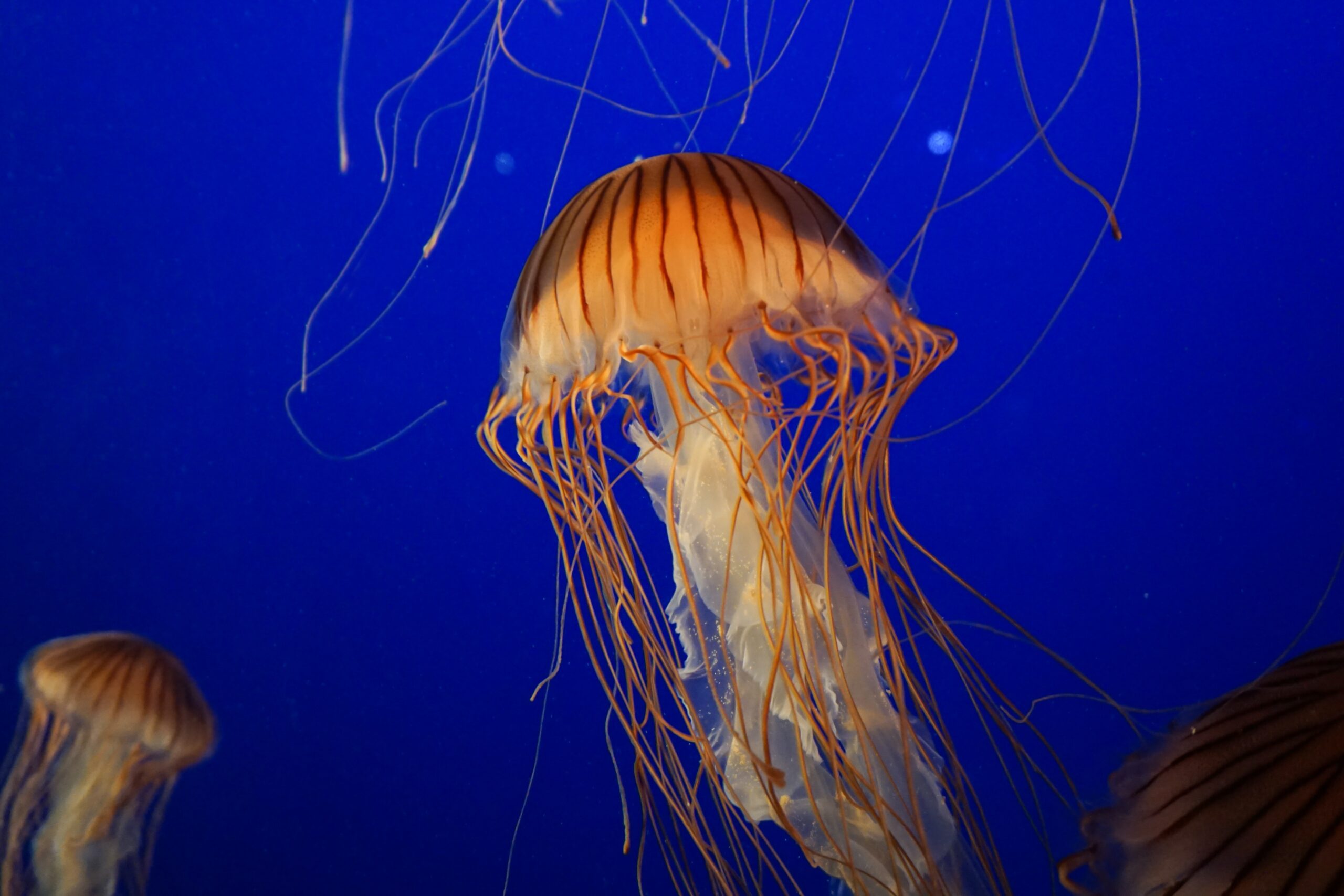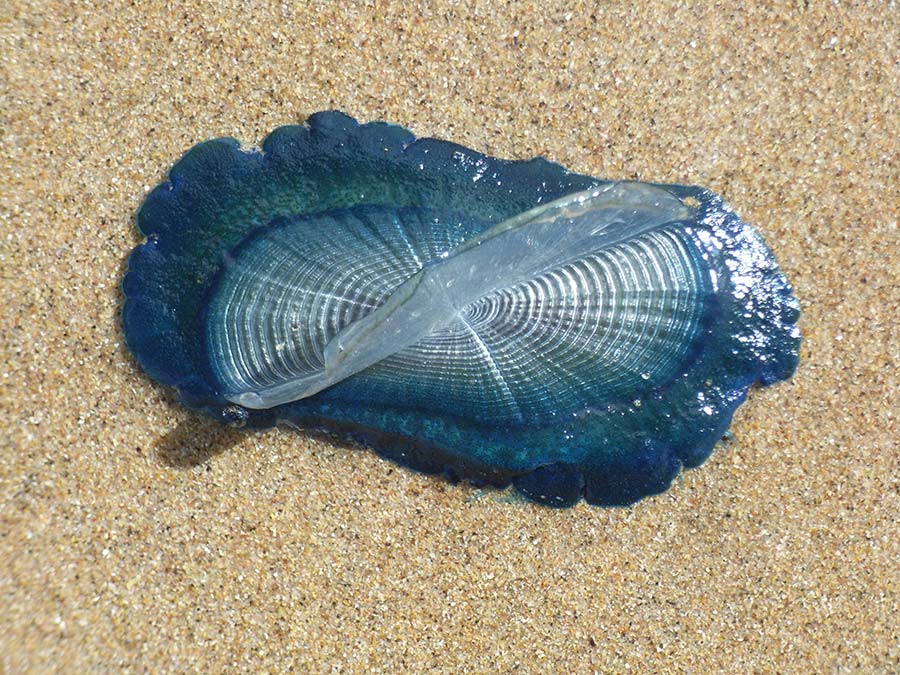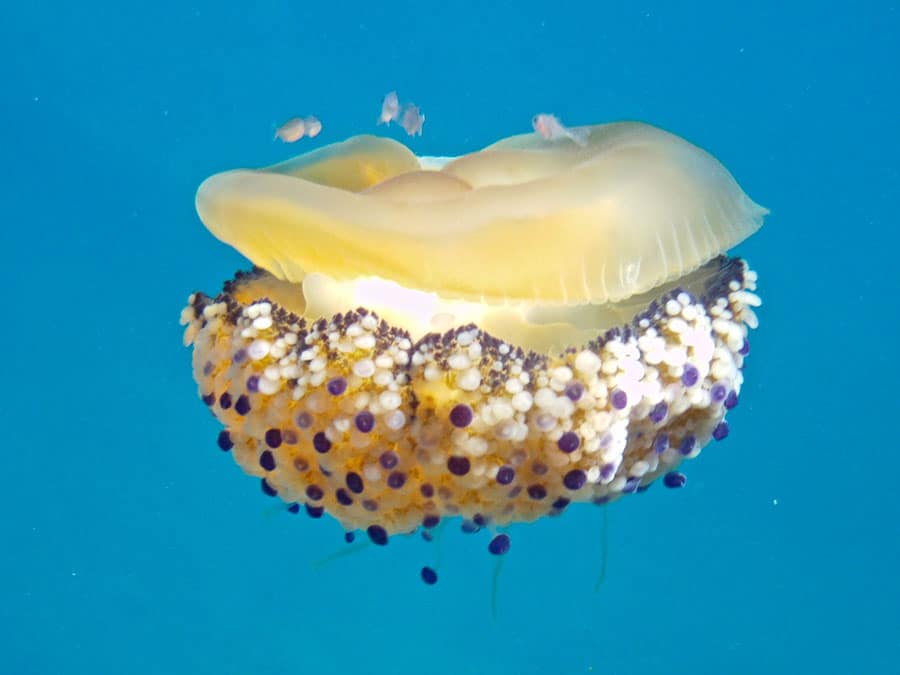Lun - Sab 10:00 – 17:00

Jellyfish are among the first multicellular organisms to populate our planet and their ecological role is very important . In fact, they function as a " filter" of the ocean , participate in marine biodiversity and contribute to balancing food chains . After eating algae, phytoplankton, copepods and shrimp, jellyfish produce excrement that falls to the bottom. Jellyfish are very voracious, and transform all the nutritional elements into a gelatinous mass that many animals do not appreciate, but which become nourishment for various organisms. They are delicious food for sea turtles (who often swallow plastic, mistaking it by smell for a jellyfish). Furthermore, some types of jellyfish are a very popular food in Asia.
Jellyfish would also have considerable importance in the carbon cycle , particularly in relation to the problem of global warming. Jellyfish would sequester large quantities of carbon, fueling the biological pump that removes it from the atmosphere.
Recent studies have shown that jellyfish not only passively follow ocean currents like plankton (of which they are part) do, but that they are able to choose where to go and move slightly actively, sometimes even against the current.
These ancient animals do not possess muscle cells: their rudimentary nervous system is capable of generating contractile impulses transmitted to the epithelial cells of the lining. In this way the characteristic pulsations of the umbel originate.
The most dangerous jellyfish in the world is the Cubomedusa, a small species that lives mainly near the Australian coasts. Contact with its terrible tentacles can also cause the death of a human being.
However, fortunately there are no deadly jellyfish in the Mediterranean Sea, in fact the majority of species are completely harmless, although it is always better to avoid touching them. Stinging jellyfish are widespread but rarely pose a serious danger to humans.
The burn-irritation is due to the presence of toxins in the animal's tentacles, which are released following contact. Those who are affected usually feel a slight shaking sensation, followed by localized burning which disappears after a few hours.
Only one species, Physalia, can cause dangerous reactions for the human organism, in rare cases even fatal. Fortunately, this jellyfish lives in the Atlantic and sightings recorded in our Mediterranean Sea are still very few.
Here is a selection of photos of the jellyfish that are most easily encountered in our seas.

VELELLA or "St. Peter's Boat" in jargon, is not a jellyfish but a floating colony of octopuses, absolutely harmless to humans. The colony of this type of jellyfish does not live suspended in the water, but floats on the surface of the sea and uses the "sail" to move. Very common in the Mediterranean, it can form kilometer-long swarms and at the end of the cycle it beaches.

COTYLORHIZA is a very common jellyfish in the Mediterranean, it can take on large dimensions (even 30 cm in diameter) but is totally harmless to humans. It is recognized by its characteristic tentacles and is often associated with fish or crustaceans that adopt it as a refuge.

COTYLORHIZA is a very common jellyfish in the Mediterranean, it can take on large dimensions (even 30 cm in diameter) but is totally harmless to humans. It is recognized by its characteristic tentacles and is often associated with fish or crustaceans that adopt it as a refuge.